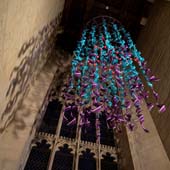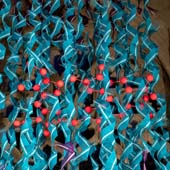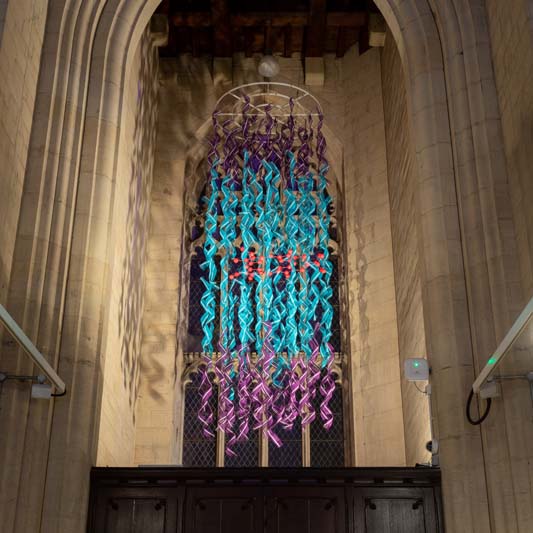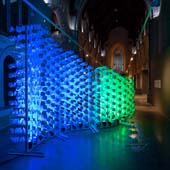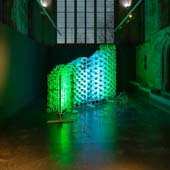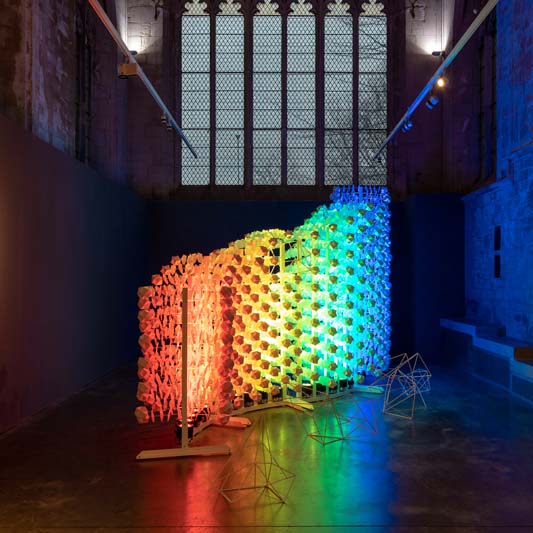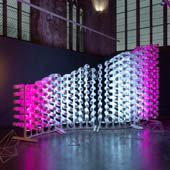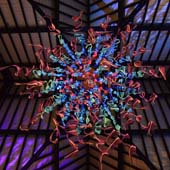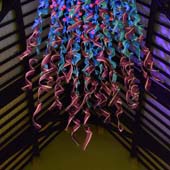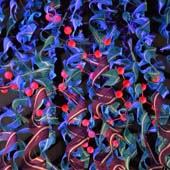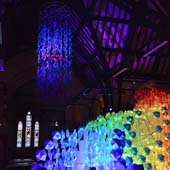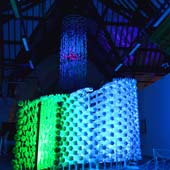Funded by Arts Council England, Sheffield University and BBSRC
http://metabolon.group.shef.ac.uk/
After their first successful art and science collaboration, the giant GFP Origami for Krebs Festival in 2015, Seiko and Nate continued their conversations and developed the artistic concept and design of METABOLON. On gaining funding from Arts Council England, The University of Sheffield, and the BBSRC, they created the beautiful physical installation with artist Darren Richardson.
In 2018, Seiko and Nate secured further funding from Arts Council England and The University of Sheffield to tour METABOLON and their new work Aegis to 20-21 Visual Arts Centre (27/10/2018 - 7/1/2019), The Hartlepool Art Gallery (19/1/2019 - 16/3/2019), Cheltenham Science Festival (4/6/2019 - 9/6/2019) and Norwich Science Festival (October 2020).
In this touring exhibition, they have created art installations to explore the invisible nano world that Nate researches in the lab, hoping to change peoples’ perceptions towards both Art & Science which are often seen as incompatible subjects.
METABOLON was first made in 2016, since then new discoveries have been made around the proteins involved, so Seiko and Dr. Nate have updated METABOLON to reflect this new infomation.
Aegis
1.8m diameter; 5m height
Hand dyed and woven paper yarn, direct dye, metal rod, polystyrene, paint, nylon, float stop, bespoke metal frame.
Enzymes are able to perform chemical reactions at room temperature and in an environment filled with water. Many equivalent reactions performed in a laboratory by scientists need lots of energy - needing high temperatures, pressures and toxic solvents.
One way that enzymes are able to skirt the high energy requirements found in the lab is by providing the perfect three dimensional environment, positioning all the components of a reaction in the optimal physical space. Then it only requires a small amount of energy to push a reaction over to completion. In addition, enzymes provide protection to the newly formed molecules to prevent unwanted and potentially dangerous side reactions occurring.
The pigments created in the sequence of reactions leading to chlorophyll absorb lots of light energy. Energy is never lost, it is just converted into other forms, such as heat, which within a cell can be very dangerous. To help prevent the newly formed pigments from causing damage, they are held within the protecting embrace of enzymes and proteins, which have systems in place to absorb and safely disperse destructive energy.
Aegis depicts this protecting embrace. Seiko found this protective natural structure reminiscent of a baby in its mother’s womb, and has reflected this delicate quality into this work. The helical structures of the enzyme encase the porphyrin molecule (seen right), producing the environment that assists the reaction and protects the cell from damage.
The helical structures are made with paper yarn which is hand dyed and woven on a traditional hundred year old Dobby Loom. The steel porphyrin pigment is protoporphyrin IX. Here it is about to receive an ion of magnesium in it’s very centre, this is the first step of seven chemical reactions assisted by enzymes which ultimately leads to chlorophyll.

